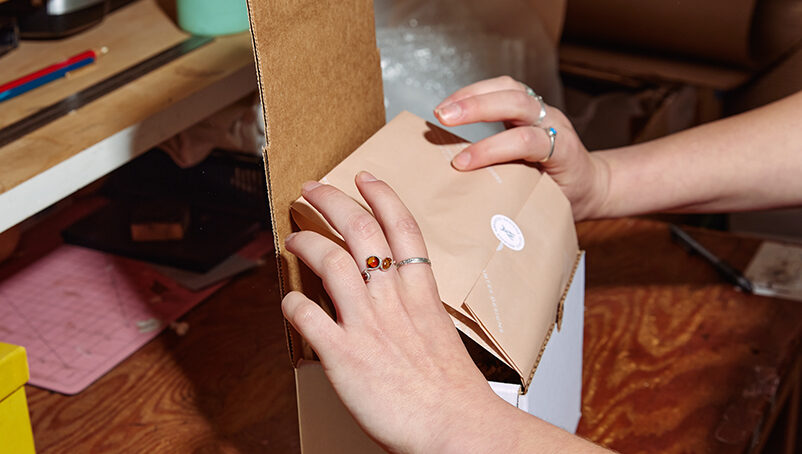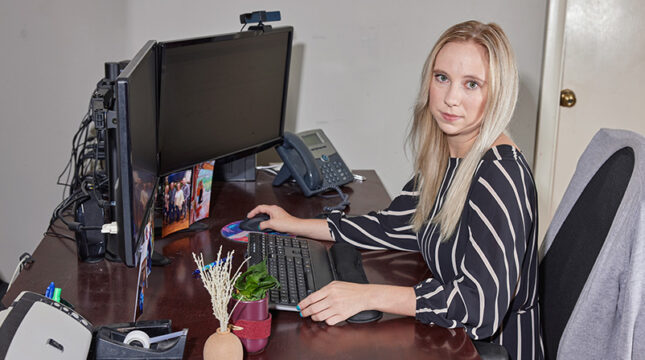Selling on Amazon Handmade
Amazon Handmade is an artisan-only space. The community is full of artists and crafters who sell one-of-a-kind products. Selling handmade items on Amazon can reach customers around the world.
Buyers who value the Amazon brand may be more likely to buy because of the brand’s reputation. However, the Amazon Handmade registration process takes a bit longer.
To become a new seller on Amazon, you first create an Amazon Professional Seller account on Seller Central. Then, you start the application process to join the Handmade marketplace.
Amazon can approve you for a Handmade account if you work alone or with fewer than 20 friends, family members or employees. Collaborative groups such as cooperatives, nonprofits, charities, non-government organizations (NGOs) and social enterprises are also allowed.
Sellers on the platform enjoy the same easy fulfillment options and massive customer base all Amazon Sellers have. However, you’re limited to 14 categories when listing items for sale, such as artwork, accessories, baby, beauty and personal care, home, stationery and party supplies, and pet supplies.
Fulfillment
Amazon Handmade sellers can ship items directly to customers or use Fulfillment by Amazon (FBA) to outsource order fulfillment. FBA means you send the products to Amazon, and they manage your inventory. Amazon will also ship your products when you make a sale.
Of course, you’ll pay a fee for the convenience of using FBA. Alternatively, you can store and track inventory on your own. Then, when you make a sale, you’d be responsible for packing and shipping your creations to the buyer.
Fee structure
Amazon Handmade selling fees are pretty straightforward:
- You’ll need a Professional Seller account, which costs $39.99 per month. However, if you’re approved for an Amazon Handmade account, the fee is waived after the first month.
- You’ll pay a 15% referral fee for each item you sell, with a $1 minimum charge.
- If you opt for FBA, your fee per unit can range from $2.29 for light and small shipments to $194.95 or more for oversized and heavy items.
- Amazon charges monthly FBA storage costs for inventory based on the daily average volume (measured in cubic feet) of the space your inventory occupies in Amazon fulfillment centers. Fees vary based on the time of year and inventory size (standard or oversized).
Insurance
Amazon doesn’t necessarily require Amazon Handmade sellers to buy business insurance. But they will require seller insurance if your sales are $10,000 or more monthly.
Still, when creating handmade goods, you may want insurance to protect yourself financially from a covered event. For example, a general liability policy can cover you if your products cause a customer to break out in a rash or have another adverse reaction.
Key takeaways about selling on Amazon
| Amazon Handmade Seller Pros | Amazon Handmade Seller Cons |
- A larger pool of active buyers (Amazon customers).
- Buyers are confident doing business with you because of Amazon’s reputation.
- If you use Amazon’s fulfillment, you don’t have to worry about costs associated with storage or staffing.
- Offers order fulfillment that can speed up shipping and save you time. Amazon also handles client inquiries for FBA sellers.
- You can offer customers free shipping if they are Prime customers.
|
- Takes longer to set up a seller account.
- Some users report the seller dashboard isn’t user-friendly.
- Fees are only waived if your application is approved.
- Fulfillment can be costly and may not justify the expense depending on your profit margin.
- Possible increased returns due to Amazon’s no-questions-asked policies.
- Complex sales tax for FBA sellers.
|
Selling on Etsy
Etsy is probably the best-known platform for selling handmade goods. It’s a popular international marketplace for makers and crafters because it’s fast and straightforward to use.
Getting started and setting up your Etsy shop only takes a few minutes. When comparing Amazon Handmade vs. Etsy, there’s no waiting period to get your Etsy application approved. You can begin listing your handmade goods, vintage items and craft supplies immediately after setting up your account.
The Etsy seller handbook lists more product categories (literally thousands) to reach your target audience more easily than on Amazon Handmade (14 categories).
Business owners praise the Etsy seller dashboard for being user-friendly. It also provides access to sales information and customer questions.
Fulfillment
Typically, Etsy sellers are responsible for their own inventory management, packaging and shipping — the platform doesn’t offer a fulfillment service like Amazon FBA. Many sellers produce, pack and ship items directly from their homes or workspaces. Other sellers outsource fulfillment services, but ultimately, sellers are responsible for ensuring their buyers receive their orders.
Handling fulfillment yourself can make storing and tracking your goods more time-consuming. However, it also gives you more control over your operations and allows you to keep more of your profits without having to pay a service to do it for you.
Fee structure
Etsy seller fees have a few different fee categories that can cost you:
- Set-up fee (one-time)
- Listing fees
- Transaction fees
- Payment processing fees
- Advertising and promotional fees
- Subscription fees
- Other optional service fees
It may seem like a lot, but many Etsy fees are optional. First, you’ll pay a one-time $15 set-up fee. Then to sell you’ll pay a product listing fee of $0.20 for each item you list in your shop. You’ll pay a transaction fee only when you make a sale.
Etsy also charges for payment processing if you enroll in Etsy Payments. Although you can get paid using PayPal, Etsy Payments is easier and more convenient for sellers.
Advertising and promotional fees are also optional — you can pay to promote your shop and set a maximum daily budget. Subscription fees are also optional. If you subscribe to Etsy Plus, a subscription package that bundles common services for sellers, you’ll pay $10 for 15 listing credits and $5 Etsy ad credits each month.
Insurance
Just like you don’t have to get a business license to sell on Etsy, you aren’t required to get business insurance.
However, according to the Etsy terms of use, you could be held financially liable for medical bills, court awards and other expenses if a product you made or sold injures someone.
Plus, when you sell through your Etsy store, you agree to cover any of Etsy’s legal fees and claims if something you did causes them to get sued. E-commerce insurance can help protect you financially from a devastating product liability lawsuit, covering medical costs and legal and court fees.
Key takeaways about selling on Etsy
| Etsy Seller Pros | Etsy Seller Cons |
- Set up an account and list items in minutes.
- Etsy dashboard is easy to navigate and use.
- Multiple categories to list many different types of items.
|
- Listing fees can add up if your items do not sell.
- Most sellers must fulfill and ship orders themselves.
|





